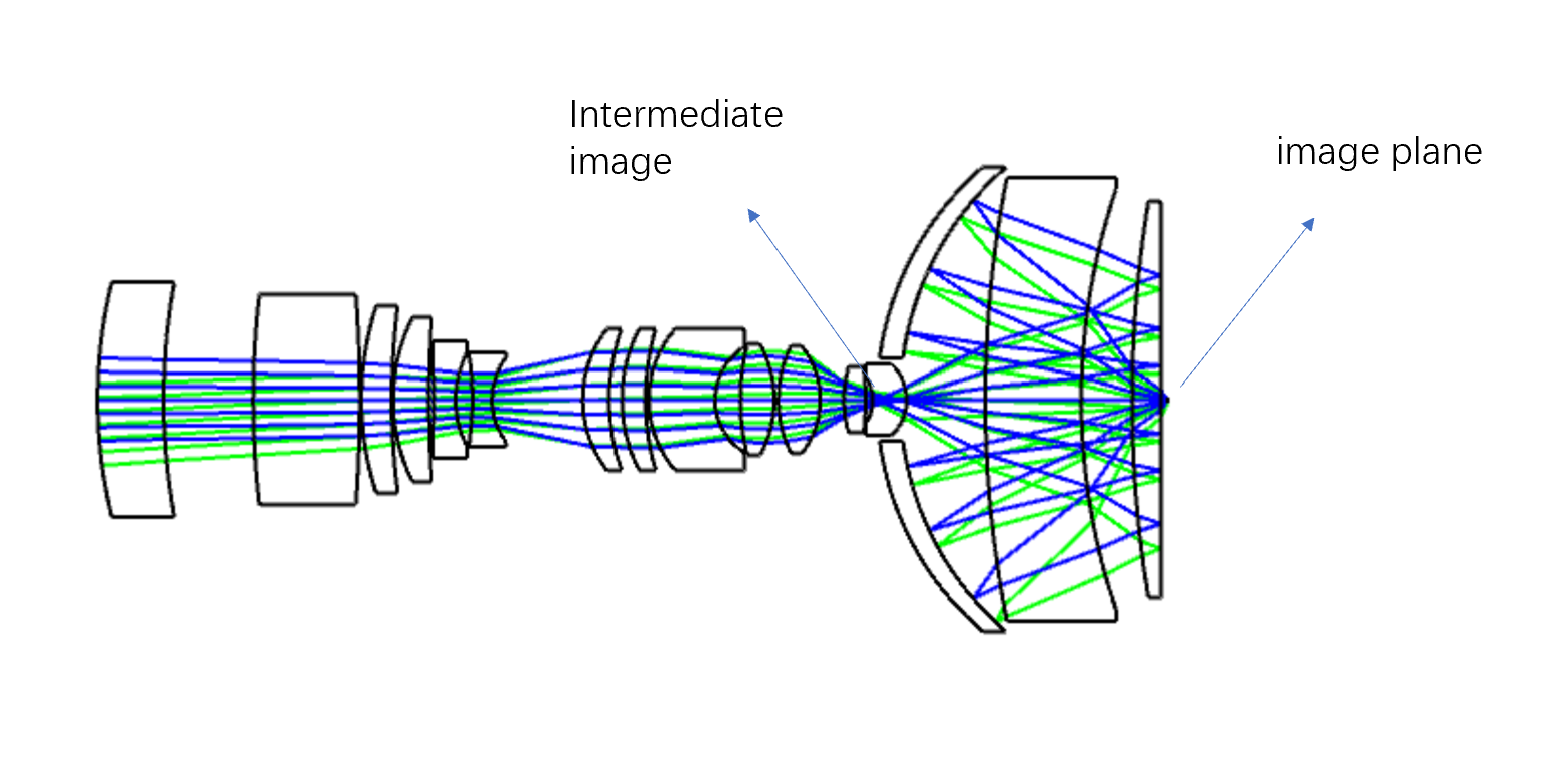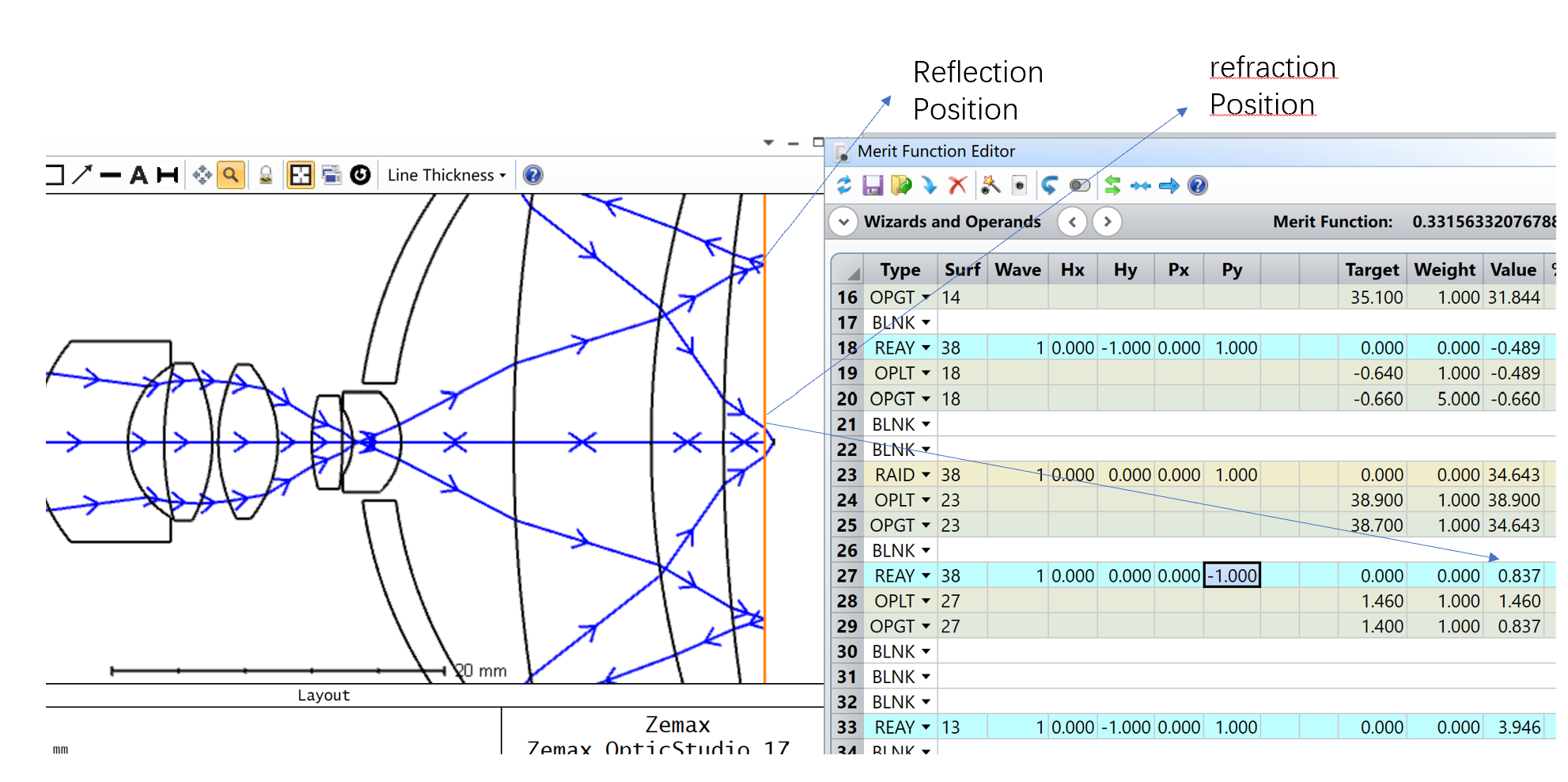Hello guys.
I’ve been working on a high NA objective for the semicon metrology. A catadioptric lens is recommended. See the layout below,

the EFFL calculated by ZEMAX is -4 mm. From what i can see, it’s an imaging system, the focal length should not be a minus value. Can anyone explain this?
and when I use the operand REAY to calculate the real ray coordinate at the image-1 surface, it went wrong. Is REAY not applicable in this kind of catadioptric lens?






